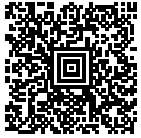
Health Data Management has an article on the use of bar codes and RFID for patient identification, meds admin, blood transfusions, collecting lab specimens, etc. Passive RFID performs better than bar codes - easier to read - but the significant price differential between even 2D bar codes and passive RFID tags will stymie RFID adoption for now.
At
this point in the race, RFID's superior functionality-no line of sight
required-is often being trumped by the convenience and lower cost of
bar code systems, experts say.
Passive RFID tags often cost $1 or more each, and the handheld
readers are more expensive than comparable handheld bar code readers.
Bar codes also are already affixed by manufacturers and suppliers to items such as medications and blood bags.
Patient tracking is mentioned as an application for passive RFID. Sure, you could use passive RFID tags with readers positioned at strategic choke-points, like the entrance to labor and delivery. Such a deployment would only be good for things like infant abduction and patient elopement. Passive RFID cannot provide true tracking (as defined in this post).
The issues that have plagued bar codes still exist, but good planning and execution can greatly minimize problems. Use two-dimensional bar codes, and make sure they're oriented for maximum readability. The use of permanent ink in bar code printers, and quality materials on which the bar codes are printed also improve readability. Expect to replace bar codes, especially on patients with a greater than average length of stay.
Some hospitals confuse patient identification workflows (around the applications mentioned above) and active RFID. And then there's this canard:
vendor's Real Time Location System uses tags that emit RF signals that
can be tracked by Wi-Fi networks. A big selling point for the system
was that the hospital didn't have to install RF antennas but could use
its existing Wi-Fi network, also from Symbol.
Regular readers of this blog know better. Pictured right is an Aztec 2D barcode.
UPDATE: HIT veteran Charles Fox adds some pithy observations on RFID versus barcode in the comments below, including this:
two closely positioned patients to be confused. This situation occurs frequently
in venues such as PACU and ED."


Recent Comments